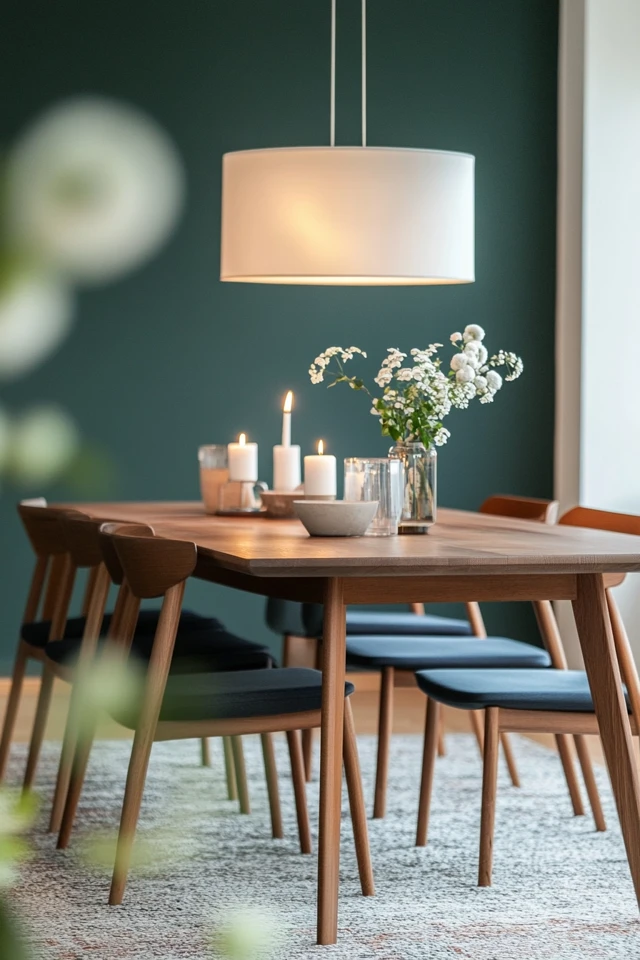The dining room is the heart of any home—a space where meals are shared, conversations flow, and memories are created. In Scandinavian design, dining rooms embody a sense of warmth, simplicity, and functionality, making them ideal for gatherings both big and small. By combining clean lines, natural materials, and cozy elements, a Scandinavian dining room creates an inviting atmosphere that encourages togetherness while maintaining a timeless aesthetic.
I first fell in love with the Scandinavian approach to dining spaces while hosting my family for a holiday dinner. The simplicity of light wood furniture, soft textiles, and subtle lighting transformed the evening into something truly special. There was a sense of harmony in the room that allowed us to focus on each other, rather than be distracted by overly elaborate décor. From that moment on, I was inspired to bring the Scandinavian principles of “hygge” and functionality into every gathering I hosted.
If you want to create a Scandinavian dining room that’s perfect for hosting, this guide will take you through the key elements, from furniture and lighting to table settings and finishing touches.
The Essence of a Scandinavian Dining Room
1. Simplicity and Functionality
Scandinavian dining rooms are rooted in the principle of “less is more.” Furniture and décor are chosen for their practicality and beauty, avoiding clutter or unnecessary ornamentation. This simplicity creates a calming environment, allowing the focus to remain on the people and the experience of gathering.
A sleek, minimalist dining table paired with comfortable chairs ensures functionality while maintaining a clean, elegant look. This approach makes the space versatile for everything from casual weeknight dinners to festive holiday celebrations.
2. Warmth and Coziness
The Scandinavian concept of “hygge” is all about creating a warm and inviting atmosphere. In a dining room, this translates to soft lighting, cozy textiles, and thoughtful touches that make guests feel at ease. Incorporating natural materials and warm tones enhances the feeling of comfort and connection, making every meal feel like a special occasion.
3. Connection to Nature
Scandinavian design is deeply inspired by nature, and this connection is reflected in the materials and colors used in dining spaces. Light wood, natural textiles, and greenery bring the outdoors inside, fostering a sense of calm and balance.
For example, a centerpiece made of fresh flowers or eucalyptus branches adds a touch of organic beauty to the dining table, reinforcing the Nordic love of simplicity and nature.
Key Elements of a Scandinavian Dining Room
Furniture
- The Dining Table:
Choose a table with clean lines and a natural wood finish, such as oak, birch, or ash. Rectangular tables are a popular choice for Scandinavian dining rooms, but round tables work beautifully in smaller spaces or to create a more intimate setting. Look for designs that balance minimalism with functionality, such as extendable tables for larger gatherings. Example: A light oak dining table with tapered legs creates a timeless, versatile centerpiece for the room. - Seating:
Scandinavian dining chairs are known for their ergonomic designs and natural materials. Pair your table with chairs that combine comfort and style, such as mid-century-inspired wood chairs or upholstered options in neutral tones. Mixing and matching different chair styles can also add visual interest while maintaining the minimalist aesthetic. Tip: Add a layer of coziness by draping sheepskin throws or wool cushions over the chairs.
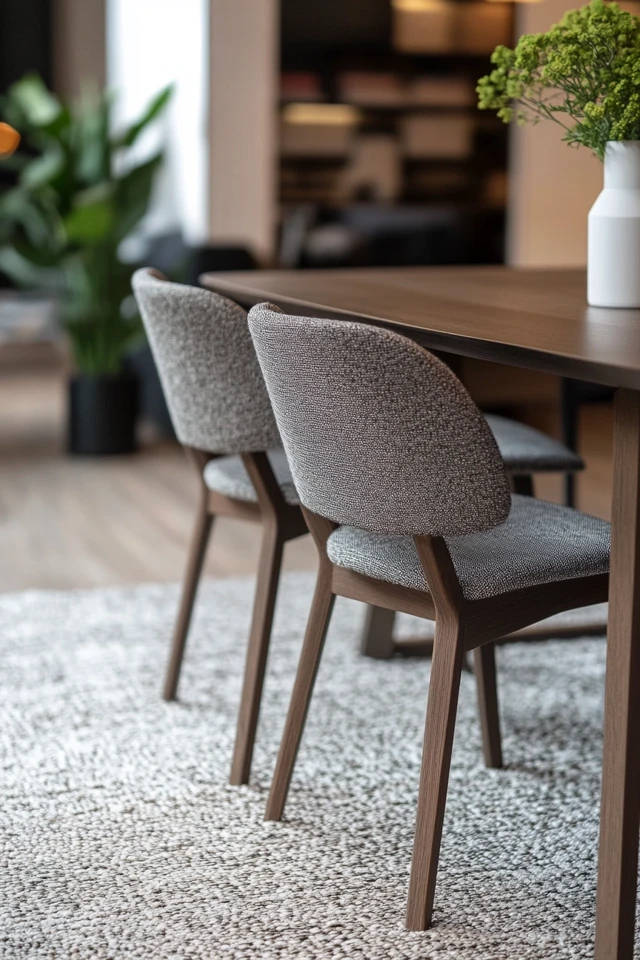
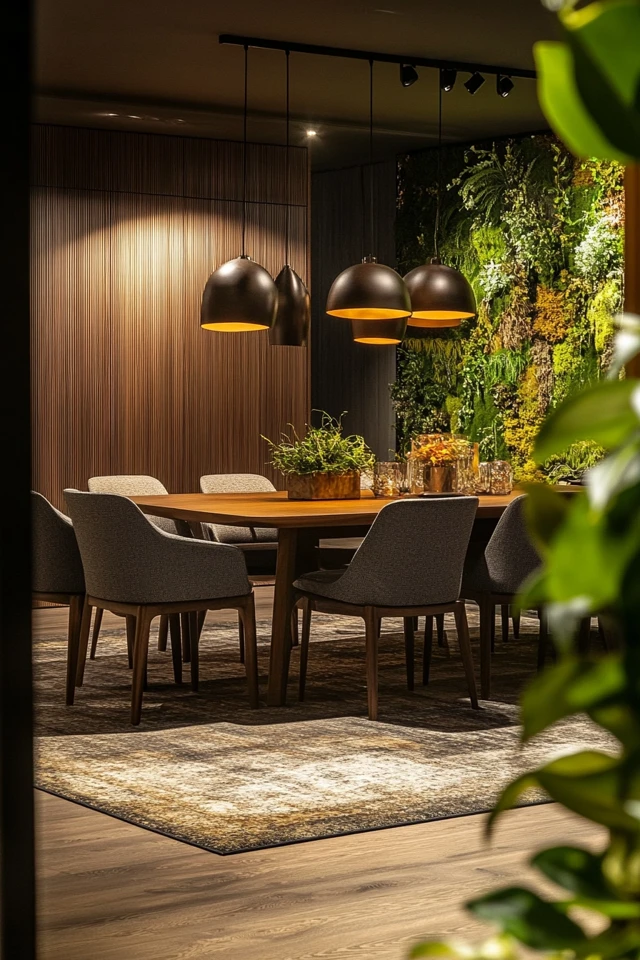

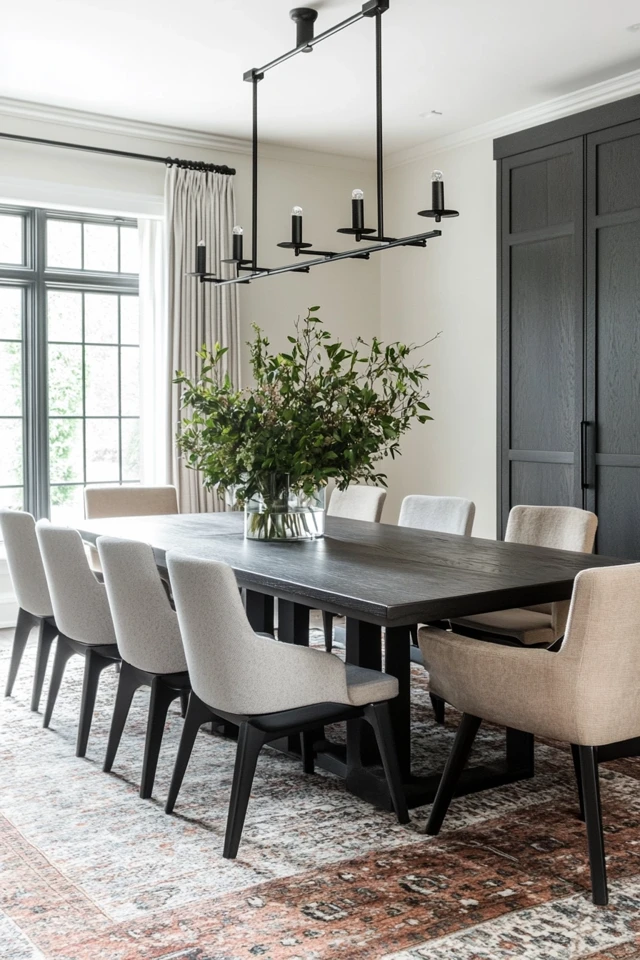
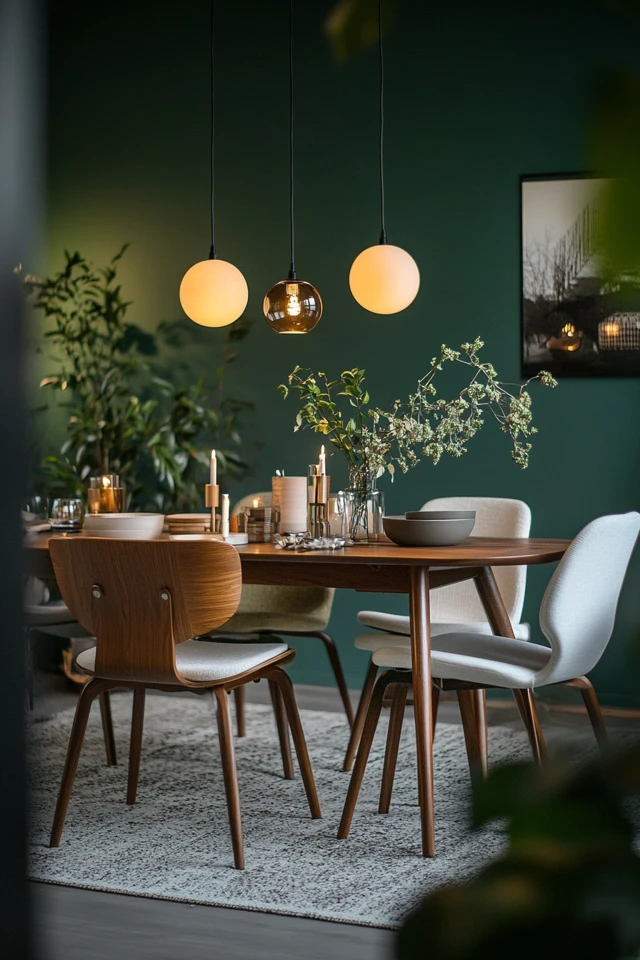

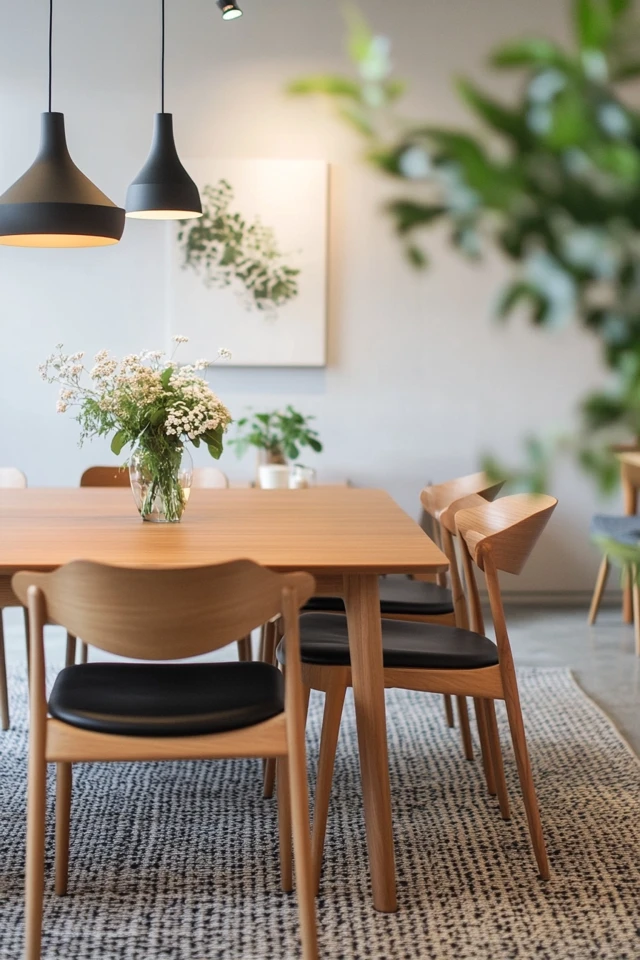
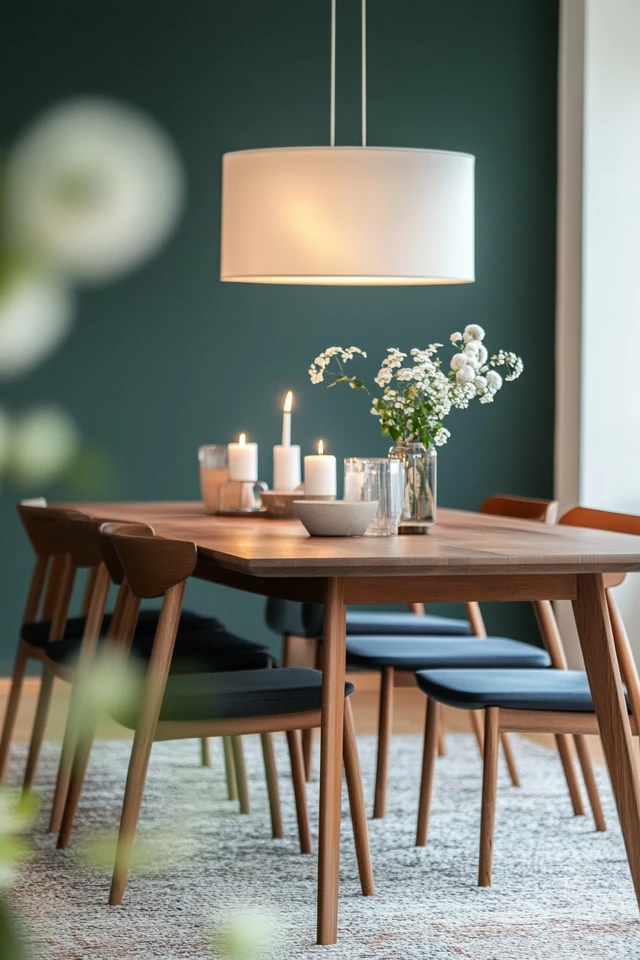
Lighting
Lighting is a crucial element in Scandinavian dining rooms, setting the mood for gatherings and enhancing the overall ambiance.
- Pendant Lights:
A pendant light hung directly above the dining table creates a focal point and provides soft, even lighting. Choose fixtures with clean, modern lines and materials like metal, glass, or natural wood. Matte finishes or muted tones work best to maintain the minimalist aesthetic. Example: A cluster of three black metal pendant lights or a single oversized glass globe light adds both style and functionality. - Candles:
Candles are essential for creating a cozy, inviting atmosphere during meals. Place a few simple taper candles or tea lights on the table or along the sideboard for a soft, flickering glow. Tip: Use unscented candles to avoid interfering with the aromas of the meal.
Table Settings
The Scandinavian approach to table settings is understated yet elegant, focusing on natural materials and subtle details that enhance the dining experience.
- Dinnerware:
Choose minimalist plates and bowls in neutral tones, such as white, gray, or beige. Matte finishes or simple, hand-thrown ceramics add texture and charm. Pair them with stainless steel or black flatware for a sleek, modern touch. - Linens:
Use natural linen tablecloths or runners to add softness to the table. Neutral tones like beige, gray, or soft pastels work well, while subtle patterns like stripes or checks can add visual interest without overpowering the simplicity. - Glassware:
Opt for simple, timeless glassware for water, wine, and other beverages. Scandinavian glass designs often feature clean lines and elegant silhouettes, making them a beautiful yet practical addition to the table. - Centerpieces:
Keep centerpieces minimal and natural. A small arrangement of fresh flowers, a sprig of greenery in a ceramic vase, or a wooden tray with candles and foliage can elevate the table without feeling overdone.
Textiles and Décor
- Rugs:
Place a light, neutral-toned rug under the dining table to anchor the space and add warmth. Choose a flatweave or low-pile rug for easy cleaning and maintenance. - Curtains:
Use sheer white curtains or linen drapes to frame the windows and allow natural light to fill the room. This enhances the bright, airy feel that Scandinavian dining rooms are known for. - Wall Décor:
Keep wall décor minimal, focusing on one or two pieces that complement the room’s aesthetic. A large framed print of a Nordic landscape or an abstract line drawing adds character without overwhelming the space.
Hosting Gatherings in a Scandinavian Dining Room
Seasonal Touches
Adjust your décor to reflect the changing seasons, adding a touch of Nordic charm to your gatherings. In the winter, incorporate evergreen sprigs, pinecones, and candlelight for a festive feel. In the summer, opt for fresh flowers, light linens, and pastel accents to celebrate the season.
Encourage Togetherness
Scandinavian dining rooms are designed to foster connection and conversation. Arrange the seating to ensure everyone feels included, and keep the table décor low-profile to avoid obstructing views or conversation.
Tip: Serve meals family-style with shared dishes in the center of the table, encouraging interaction and a sense of community.
Keep It Simple
The key to a successful Scandinavian-inspired gathering is simplicity. Avoid overly elaborate table settings or décor, focusing instead on thoughtful details that enhance the experience. Let the food, company, and ambiance take center stage.
FAQ Section
1. What colors work best for a Scandinavian dining room?
Stick to neutral tones like white, gray, beige, and light wood finishes. You can add subtle pops of color through textiles or table settings, but keep the palette cohesive and understated.
2. How can I make a small dining room feel more spacious?
Choose a light-colored table and chairs, and use mirrors or light fixtures to reflect natural light around the room. Keep the décor minimal to avoid overcrowding the space.
3. What materials are best for Scandinavian dining furniture?
Natural materials like oak, birch, or ash are ideal for tables and chairs. Linen, wool, and cotton are great choices for textiles, while ceramics and glass work well for tableware.
4. How can I make a Scandinavian dining room feel cozy?
Incorporate soft lighting, natural textures, and cozy elements like sheepskin throws, linen curtains, and candles. Layering these details creates a warm, inviting atmosphere.
5. Where can I find Scandinavian dining furniture and décor?
Look for Scandinavian-inspired pieces at stores like IKEA, West Elm, or Nordic design brands such as Muuto and Ferm Living.
Conclusion
Creating an inviting Scandinavian dining room is all about simplicity, warmth, and functionality. By focusing on clean-lined furniture, natural materials, and cozy touches, you can design a space that feels both stylish and welcoming. Whether you’re hosting a casual dinner with friends or a festive holiday gathering, a Scandinavian dining room provides the perfect backdrop for meaningful moments and lasting memories. Use these tips to craft your own serene and inviting space, and enjoy the beauty of Nordic-inspired dining in your home.

